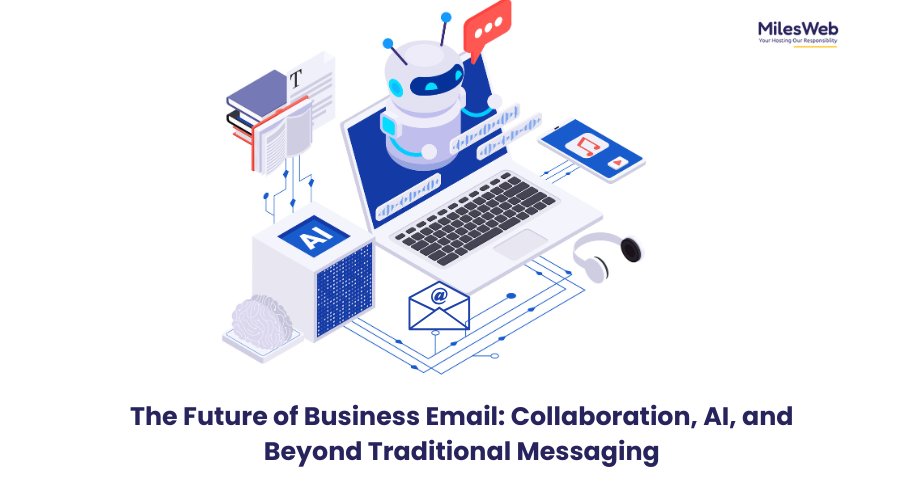
Business email has been the backbone of professional communication for decades. But now, email is evolving from a tool for sending messages to a hub for collaboration, automation, and intelligent workflows. With the emergence of artificial intelligence and real-time collaboration, integrations are advancing email beyond the boundaries of traditional inboxes.
The future of email is no longer another tool for sending messages but rather intelligent, efficient communication tools that integrate with professional email solutions that define modern-day work.
What is the Future of Business Email?
1. AI-Powered Email Assistance
AI will become one of the key tools of change in business email communication. It reduces manual work and increases the speed of correspondence, starting with writing refined responses to the offering of smart suggestions for replies. You can get such an email with the cheapest domain name solutions.
These tools develop expertise through user actions, changing the tone and words to a professional level. This means that an effect is not only faster responses but also communication that expresses a more natural and personalized response.
2. Deeper Flexibility of Collaboration
The next-gen businesses won’t send a static email for communication. Instead, they will integrate AI features for smart email composition. There will be no need to migrate to other platforms for editing, brainstorming ideas, and more.
It minimizes the use of separate applications, like chat or project management applications. This results in email being the core of communication and action, which increases the efficiency of the workflow.
3. Enhanced Security with AI Monitoring
Cyberattacks have become a major web threat and lead to complicated issues like phishing, data breaches, and more. AI-driven email monitoring strengthens email security. The systems detect phishing attempts, suspicious links, and unusual behaviour in real time.
Employees gain safer inboxes with fewer risks of falling into scams. Businesses, in turn, build resilience against threats that could otherwise disrupt operations.
4. Seamless Integration with Business Tools
In the future, the email systems will seamlessly collaborate with CRM tools, calendars, and project management software. Instead of being inactive, emails will now trigger actions.
As an example, customers would be able to send queries that would create tickets automatically in support systems. Repetitive manual data entry is no more a part of your job. It saves time and boosts response rates because of automation.
5. Voice and Multimodal Communication
Email is beyond texts. In the future, we can incorporate voice notes, video snippets, and interactive media. So, the next-gen communication will be faster and more engaging.
Businesses can easily bridge the communication gap with a wider audience range. The workforce can simply record quick updates instead of typing long explanations.
6. Anticipatory and Sensing Messaging
Artificial intelligence analyzes historical messages to predict future email drafts. So, you can easily generate a follow-up email emphasizing the main points of previous meetings/sessions.
This strategy is seen as aggressive, and the employees are seen as proactive, even though the email security was not violated. It will ensure that they do not miss out on any meaningful discussion.
7. Global Communication with Real-Time Translation
International businesses need real-time content translation. Thanks to AI tools like Gemini or Copilot that break the language barriers instantly and ensure smooth communication with international clients.
It strengthens global collaboration while avoiding translation delays. Teams can focus on relationships and outcomes instead of struggling with language gaps.
Closing Note
The future of business email is much more than merely exchanging communications. With AI, collaboration tools, and predictive features, it is becoming a powerhouse of productivity and safety. Organizations can expect a communication tool that is more connected, smarter, and more proactive.
Those organisations that take advantage of this movement will have a better workflow, a reduced operational burden, and enhanced relationships around the world. Email has been around for decades, but there is no question it is being reimagined today to still be a significant player in determining the future of work.
WordPress Development | WordPress Theme Development | PSD To WordPress

